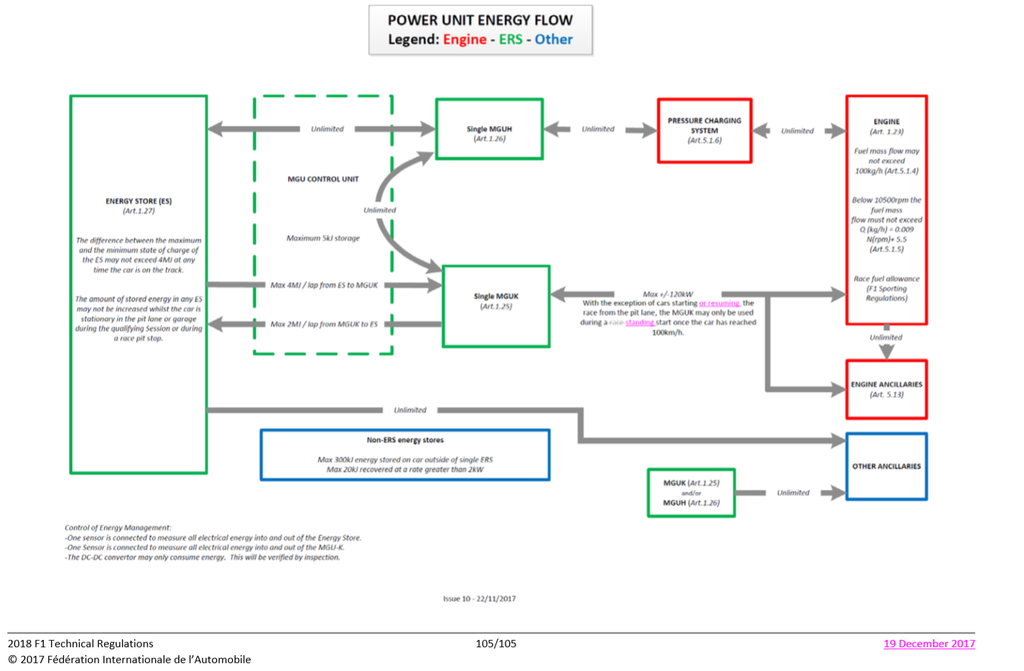“what does it mean?” “what is the definition of an alloy in this context?”.hollus wrote: ↑11 Aug 2018, 18:53Indeed the rules seem to mention aluminum alloys only for the pistons. But what does it mean? What is the definition of an alloy in this context? That are the allowed alloyed components?
How much iron is allowed in an "aluminum alloy"? Just thinking loud here, maybe I am way off base.
There is a 300g minimum weight per piston (with piston-pin, piston-pin retainers and piston rings). That would be the limiting factor, surely?
Edit: For clarity: Thisis stated, wrongly, here: https://www.formula1.com/en/championshi ... d_ERS.htmlThe crankcase and cylinder block of the engine must be made of cast or wrought aluminium alloys - the use of composite materials is not allowed. The crankshaft and camshafts must be made from an iron-based alloy, pistons from an aluminium alloy and valves from alloys based on iron, nickel, cobalt or titanium.
On second thoughts, this is not present in the 2017 technical regs. Was this present in former rulesets???
So indeed, there is NOTHING in the current regs (that I can find) that forbids steel nor mandates aluminum. Sorry!
This is what is in the current regs:
5.16 Materials and construction – General :
5.16.1 Unless explicitly permitted for a specific application, the following materials may not be used
anywhere on the power unit :
a) Magnesium based alloys.
b) Metal Matrix Composites (MMC’s).
c) Intermetallic materials.
d) Alloys containing more than 5% by weight of Platinum, Ruthenium, Iridium or Rhenium.
e) Copper based alloys containing more than 2.75% Beryllium.
f) Any other alloy class containing more than 0.25% Beryllium.
g) Tungsten base alloys.
h) Ceramics and ceramic matrix composites.
5.16.2 The restrictions in Article 5.16.1 do not apply to coatings provided the total coating thickness
does not exceed 25% of the section thickness of the underlying base material in all axes. In all
cases, other than under Article 5.16.3(b), the relevant coating must not exceed 0.8mm.
Where the coating is based on Gold, Platinum, Ruthenium, Iridium or Rhenium, the coating
thickness must not exceed 0.035mm.
5.16.3 The restrictions in Article 5.16.1(h) do not apply to the following applications :
a) Any component whose primary purpose is for electrical or thermal insulation.
b) Any coating whose primary purpose is for thermal insulation of the outside of the
exhaust system.
5.16.4 Magnesium based alloys, where permitted, must be available on a non-exclusive basis and
under normal commercial terms to all competitors. Only those alloys covered by ISO16220 or
ISO3116 and approved by the FIA may be used.
5.17 Materials and construction – Components :
5.17.1 Pistons must respect Article 5.16. Titanium alloys are not permitted.
An aluminium alloy which is either AL-Si, AL-Cu, AL-Mg or AL-Zn based.
Refer to link I posted.



